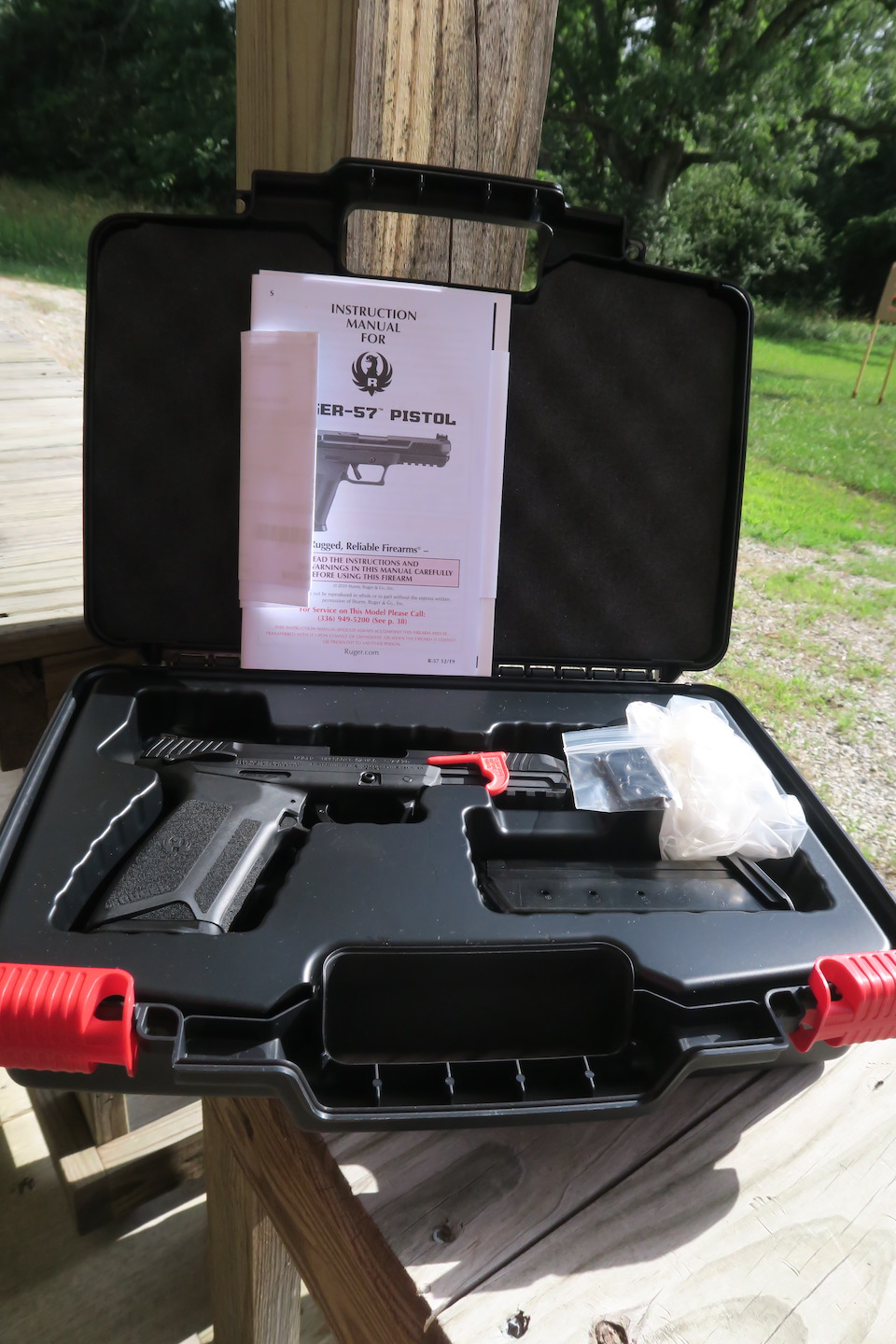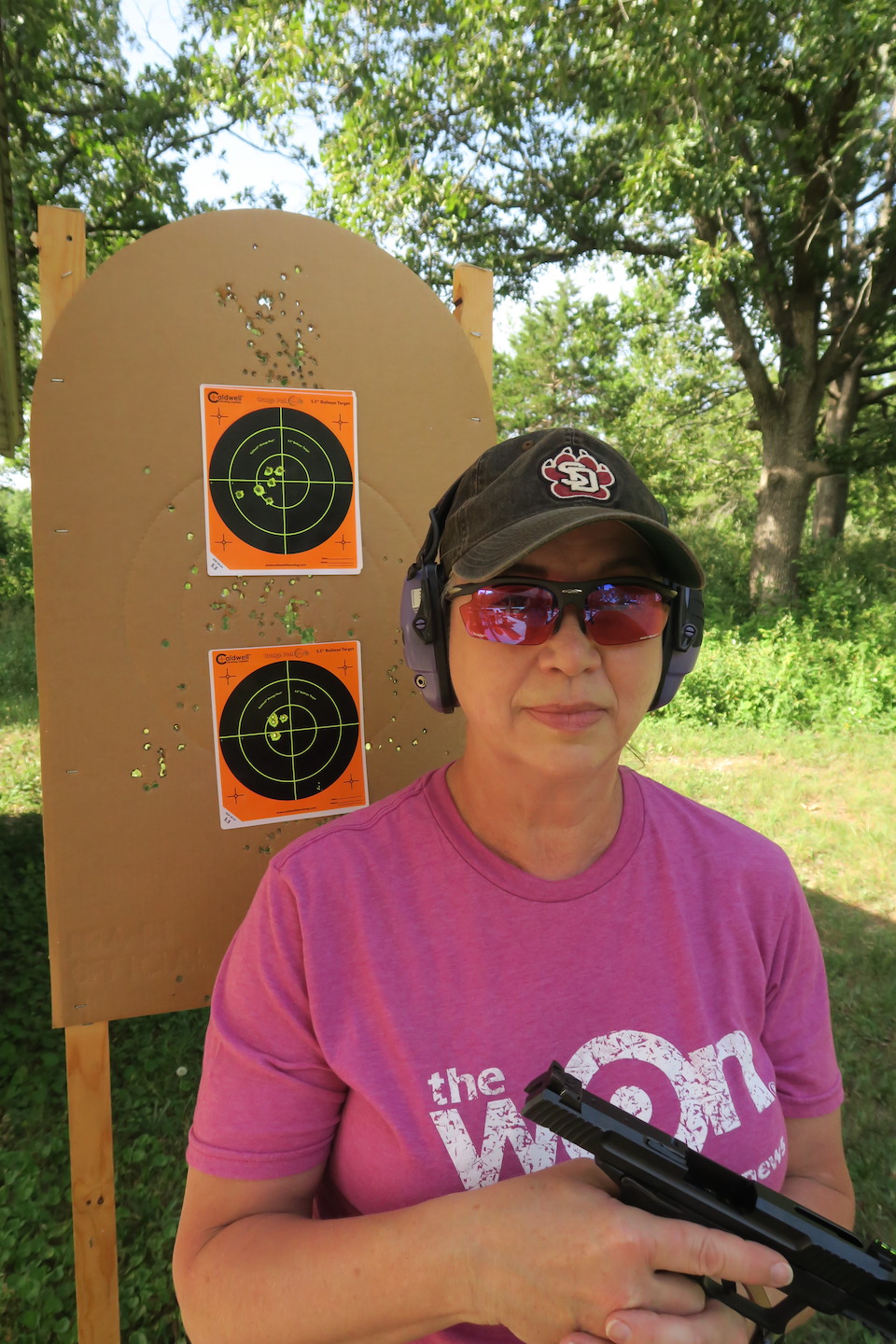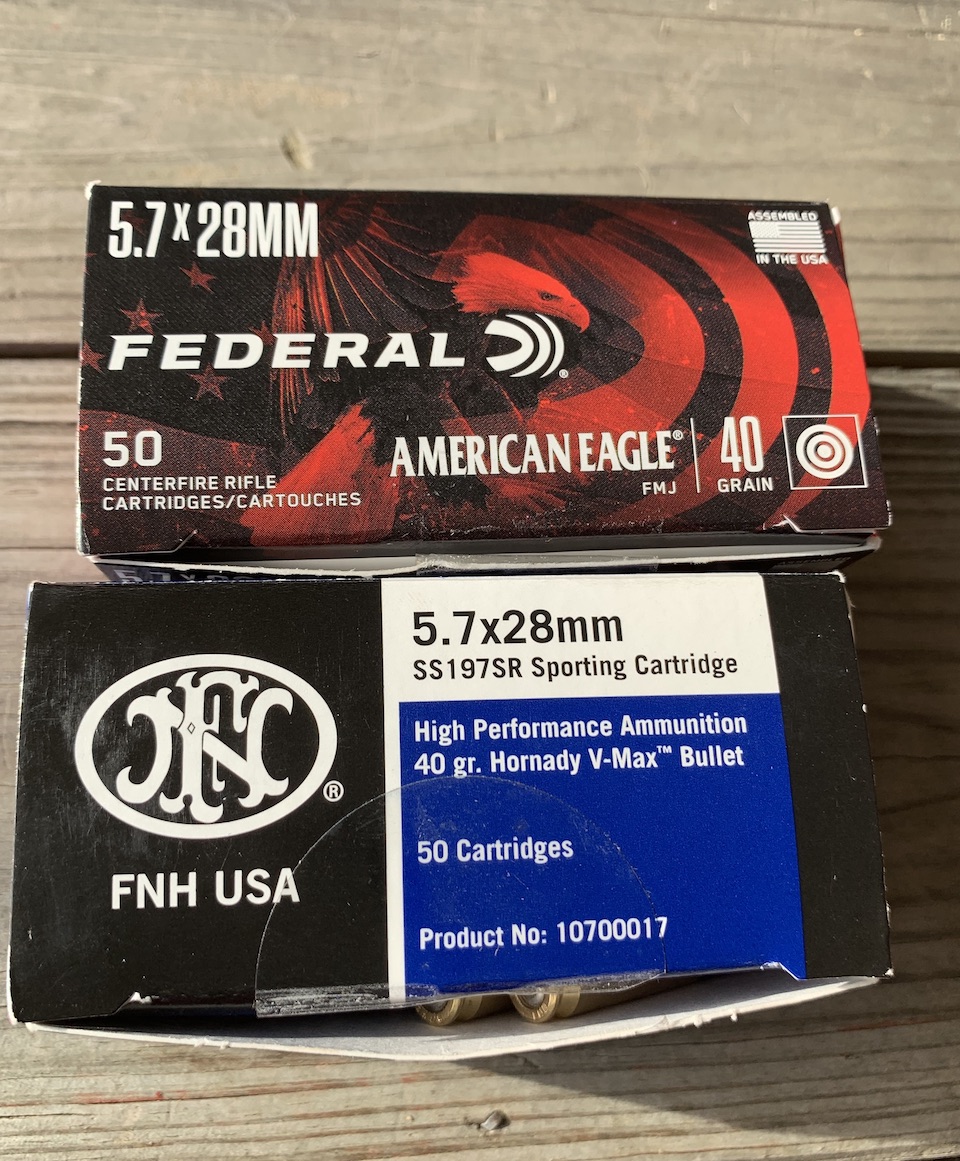If you’re looking for something different in the world of firearms, something you can add to your growing collection and possibly, use in the future, check out the Ruger-57 – chambered in 5.7 x 28 mm.
Sponsored by Ruger
I first noticed this handgun in early January 2020, and I heard the buzz surrounding it. After receiving the test gun and getting the ammo for it (thankfully, before the whole COVID ammo shortage happened), I took it to the range. The hubs came along. As you may know, my husband is a ballistics specialist and an explosives engineer. We call him “Dr. Bomb.” I call him “the Bomb.” Let’s just say the Bomb was impressed – so impressed that when I asked him why he likes the gun and wants me to buy it for him, he wrote this … keep in mind, the man taught college graduate level courses for many years.
History – Why the 5.7 mm cartridge? The NATO quest for new “Personal Defence Weapons”
In the late 1980’s, just prior to the dissolution of the Soviet Union in 1991, the Soviet and Warsaw Pact militaries continued their struggles to maintain an imagined superiority over NATO military forces. As a part of this effort, the socialist militaries developed and fielded a new body armor system that was designed to prevent penetration by the NATO-standard pistol and submachine gun ammunition, the 9 x 19mm Parabellum (“9mm Luger” ammunition). In response, in the early 1990’s a planning group within NATO created the “Program for Collaborative Research Into Small Arms Technology,” commonly known by its acronym, CRISAT. One of the CRISAT research areas was to standardize a dismounted personnel target wearing body armor and head protection analogous to the current Soviet/Warsaw Pact design. Per the usual NATO practice, they categorized the document describing this target as a Standardization Agreement, or STANAG, number 4512. The STANAG 4512-defined body armor had a hardened 1.6 mm titanium strike plate backed by 20 layers of Kevlar and it could stop the 9mm Luger projectile.
Because of the supposed ability of the late-era Soviet-style body armor to degrade the effectiveness of the 9mm ammunition used in the primary weapons carried by support troops (truck drivers, artillery crews, etc.), NATO began a search for new so-called Personal Defence Weapons (note the Brit spelling), or PDWs, employing ammunition more effective at defeating the CRISAT STANAG 4512 body armor. Such ammo would allow support troops to utilize more effective handguns, and to have lighter shoulder-fired arms more controllable in full auto fire than submachine guns and shorter than assault rifles.
R&D by major European arms manufacturers into new ammo that met the NATO PDW concept, as well as handguns and long guns to chamber the ammo, resulted in two primary contenders – the H&K MP-7 firing H&K’s new 4.6 x 30mm cartridge, and the FN P90 and Five-seveN weapons firing FNs new 5.7 x 28mm cartridge. Both cartridges are bottlenecked, rimless or rebated rim centerfire designs that fire smaller caliber bullets at higher velocities than 9mm NATO handguns and submachine guns. For several reasons, the FN designs were favored by NATO evaluators (except for the German delegation, with H&K being a German company) but the failure to agree on standardization of a NATO PDW halted the process indefinitely.
Nevertheless, more than 50 national governments and many other smaller governmental organizations have selected PDWs of one sort or the other to arm Special Forces, police, military support troops, and personal protection units so the concept is active even if NATO has not officially standardized a PDW or its ammunition.

Cue the new Ruger-57
It is 30+ years since the beginning of the PDW business, and the 5.7mm caliber is still relatively unknown in the US. Ruger has a reputation for risking the introduction of new ideas and new guns in the shooting world, and it appears they are trying to spark interest in the little-known cartridge by the introduction of a new autoloading handgun chambered in the 5.7mm round, the Ruger-57. The gun has an internal hammer and is recoil-operated through use of a delayed blowback functional design. As opposed to blowback designs where the barrel is fixed to the gun frame, in the Ruger system a recoil spring holds the barrel and slide together until right after the gun is fired. At that point, the barrel and slide travel rearward at different speeds until a cutout in the barrel underlug strikes a stop. The slide continues its rearward movement, extracting and ejecting the spent cartridge case, cocking the hammer, and further compressing the recoil spring. When the slide reaches the end of its travel, the recoil spring forces it to travel forward whereupon it strips the top round from the magazine and chambers it. The slide and barrel continue to move forward into their firing positions.
The Anatomy of the Ruger-57
Ruger’s Secure Action fire control, which is very similar to the LCP II and Security-9 systems, uses a transfer bar from the trigger to the internal hammer’s sear to provide a double-action system. As such, the trigger pull feels nearly the same whether you are firing the first round from the magazine or the last. My pistol’s trigger has a long take-up that disengages the trigger safety (the little bar in the middle of the trigger paddle) before presenting resistance to the shooter’s trigger finger. At that point, the trigger stages to about a 4-1/2 pound pull and fires. At first, that stage felt inconsistent to me from one shot to the next, but after initially checking-over and cleaning the gun, firing nearly 100 rounds, and then thoroughly cleaning it again with special attention to the trigger group, hammer, and hammer sear the trigger felt the same from one pull to the next.
My pistol also has a bilateral manual safety at the rear of the slide, which operates in the same manner as one on a 1911-style gun – rotated up is safe, and rotated down to the horizontal is the fire position. This safety locks the trigger transfer bar, and it prevents the slide from moving, so with the safety on, the trigger will not operate and the slide cannot be retracted. In addition, a hammer catch prevents the hammer hitting the firing pin unless the trigger is pulled.
The slide stop and magazine release are located in positions that will be familiar to many handgun shooters – the stop is on the left side top of the frame and accessible to the right thumb when using a right-handed grip, and the release is at the base of the trigger guard on the left side of the frame. The magazine release can be relocated to the right side of the frame if the shooter desires.

Ruger-57 on the Range
As per the usual, Ruger says to use only newly loaded factory ammunition. As the factory ammunition is relatively scarce and expensive, some shooters may be tempted to manufacture their own fodder, but handloads are verboten!
Barb and I shot the 2 different brands of ammunition she received from Federal – (Federal American Eagle, 40 grain and FNH High Performance Ammunition, 40 grain).

Using information posted online from the manufacturers, as well as an online survey of current pricing for the Ruger-57 and 2 appropriate competing handguns for comparison, I made the following comparisons. I chose the FN Five-seveN (like the Ruger, 5.7 x 28mm caliber, with a magazine capacity of 20 rounds) and the GLOCK 17 Gen 5 (9 x 19mm caliber with a magazine capacity of 17 rounds of ammunition, a standard sidearm carried by European police and NATO military units).
With regard to both the highest and lowest prices I could find, the Ruger is in the middle; the FN ranged from about $1400 to about $950, the GLOCK ranged from about $700 to about $650, and the Ruger ranged from about $900 to about $700.
Learn more about the Ruger-57 at Ruger’s website.
Babbs’ Impression of the Ruger-57
I’m glad the hubs liked it enough to want to buy it. I felt the same way. Some guns go back after a review. This one won’t. I like that it can be used for personal home defense, and it handled really well. I like that it’s different and as Ruger claims, “cool.” I have found that after several years of gun ownership, sometimes I want to own a certain type of gun because I “can.” This is definitely one of those guns and times.
Resources List
Arvidsson, Per G., NATO Infantry Weapons Standardization (briefing), https://ndiastorage.blob.core.usgovcloudapi.net/ndia/2008/Intl/Arvidsson.pdf downloaded 7/6/2020
“In the line of fire,” Global Defence Review, https://web.archive.org/web/20061016074936/http://www.global-defence.com/2006/Utilities/article.php?id=40 downloaded 7/6/2020
Publisher/Editor Barbara Baird is a freelance writer in hunting, shooting and outdoor markets. Her bylines are found at several top hunting and shooting publications. She also is a travel writer, and you can follow her at https://www.ozarkian.com. View all posts by Barbara Baird